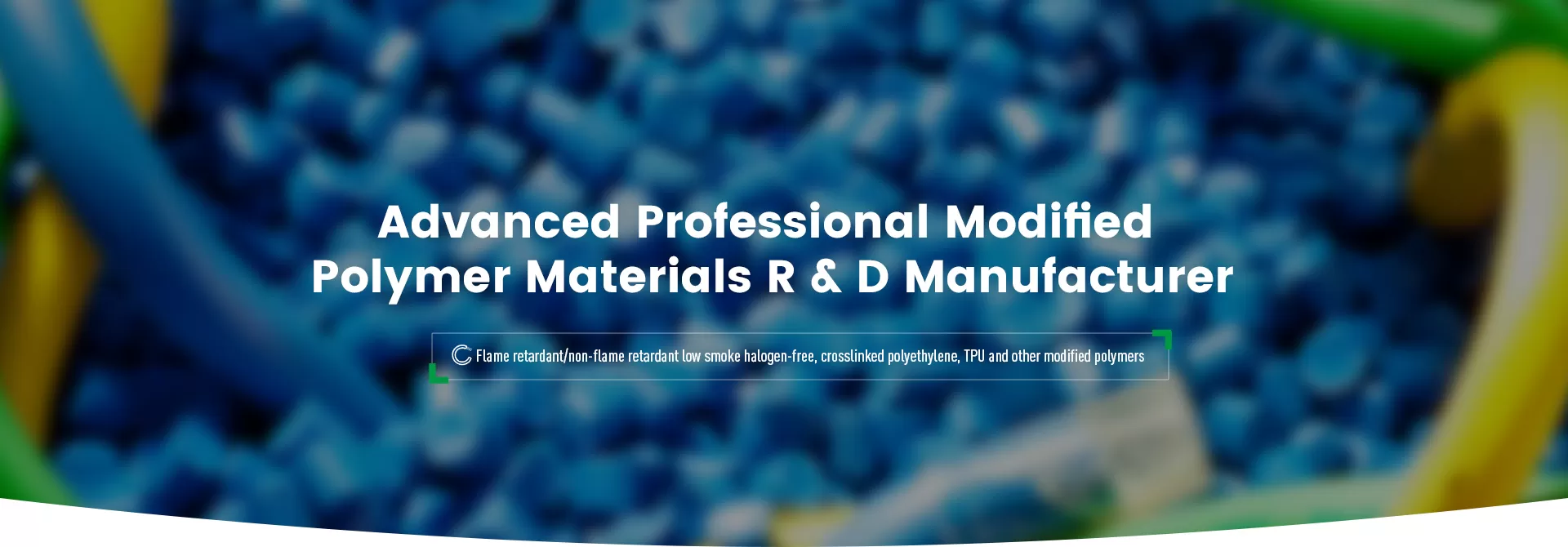
Product Description
Photovoltaic cable sheath material/cable insulation material is made of high-purity resin as the base material, mixed with halogen-free flame retardant, cross-linking agent, antioxidant, etc., and extruded and granulated. It has excellent performance such as halogen-free, heat-resistant, and weather-resistant, has no precipitation pollution, meets the relevant requirements of ROHS, and is easy to extrude and process.
Application
UL4703 series American standard cable.
Product Parameters
| Testing items | VALUE | Typical Value | UNIT | Method |
| Physical property | ||||
| Hardness | 95±3 | 95 | Shore Hardness A | GB/T 2411 |
| Density | ≤1.50 | 1.35 | g/cm3 | GB-T 1033 |
| Low-temperature brittle temperature Failure number | ≤15/30 | 0/30 | PCS | GB/T 5470 |
| Tensile strength before irradiation | ≥8 | 8.8 | MPa | GB/T 1040 |
| Elongation at break before irradiation | ≥180 | 200 | % | GB/T 1040 |
| Tensile strength before aging | ≥10 | 12.2 | MPa | GB/T 1040 |
| Elongation at break before aging | ≥150 | 165 | % | GB/T 1040 |
| Thermal elongation 0.2MPa×200℃×15min | ||||
| Elongation under load | ≤100 | 40 | % | GB/T 2951 |
| Permanent deformation | ≤25 | 0 | % | GB/T 2951 |
| Aging performance 150℃×168h | ||||
| Change rate of tensile strength | ≤-30 | -18 | % | GB/T2951.12 |
| Change rate of elongation at break | ≤-30 | -20 | % | GB/T2951.12 |
| Electrical performance | ||||
| 20℃ volume resistivity | ≥1.0×1014 | 2.7×1014 | Ω.cm | GB/T 1410 |
| Dielectric strength | ≥20 | 22 | MV/m | DIN EN 6024 |
| Flame retardancy and combustion performance | VW-1 | VW-1 | / | UL1581 |
UL American standard photovoltaic cable insulation materials are cables specially designed for use in solar photovoltaic power generation systems. These cables need to meet specific performance requirements to ensure long-term stable operation in harsh outdoor environments. According to UL standards, the insulation materials of photovoltaic cables should have characteristics such as high temperature resistance, UV resistance, chemical corrosion resistance, oil resistance and water resistance.
Under UL standards, the insulation of photovoltaic cables usually uses cross-linked polyethylene (XLPE), which is a material modified by irradiation cross-linking. It can provide excellent electrical and mechanical properties while ensuring that the product is halogen-free, solving the problem of "secondary pollution" that may be generated during combustion. The long-term operating temperature of XLPE insulation materials can reach 125℃ and 150℃, and the short-term tolerance temperature can reach 250℃. It has excellent heat aging resistance and environmental stress cracking resistance.
The rated voltage of UL photovoltaic cables is usually 600V or 1000V, and the test voltage has different requirements according to different cable specifications. For example, the test voltage of 18-10AWG cable is 3000V, while the test voltage of 8-2AWG cable is 7500V. The operating temperature range of these cables is -40°C to 90°C, the maximum conductor temperature can reach 125°C, and the allowable short-circuit temperature is 200°C within 5 seconds.
In addition, the UL standard also requires that the service life of photovoltaic cables is expected to be 25 years, and the bending radius should be greater than 4D for fixed installation and greater than 5D for occasional mobile installation. These requirements ensure the flexibility and reliability of photovoltaic cables during installation and use.
In general, the design and performance requirements of UL US standard photovoltaic cable insulation materials are to meet the needs of long-term outdoor use of solar photovoltaic systems, ensuring the safety and durability of photovoltaic cables.